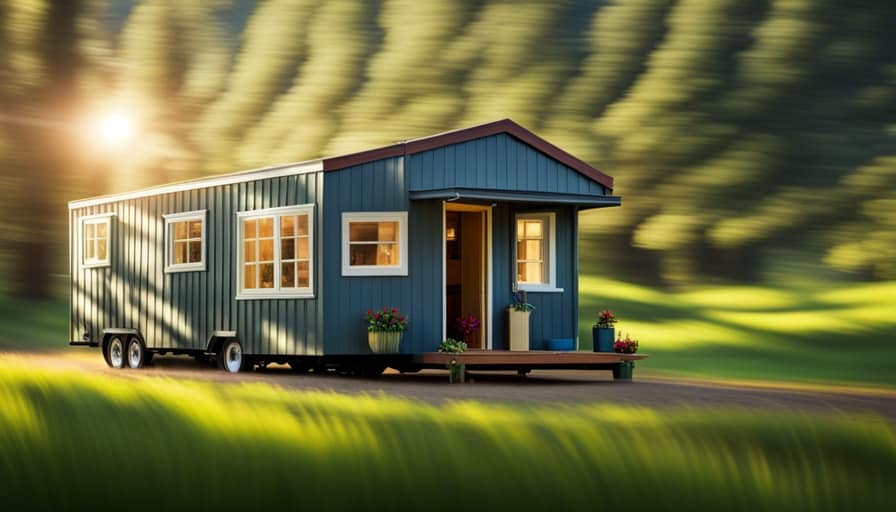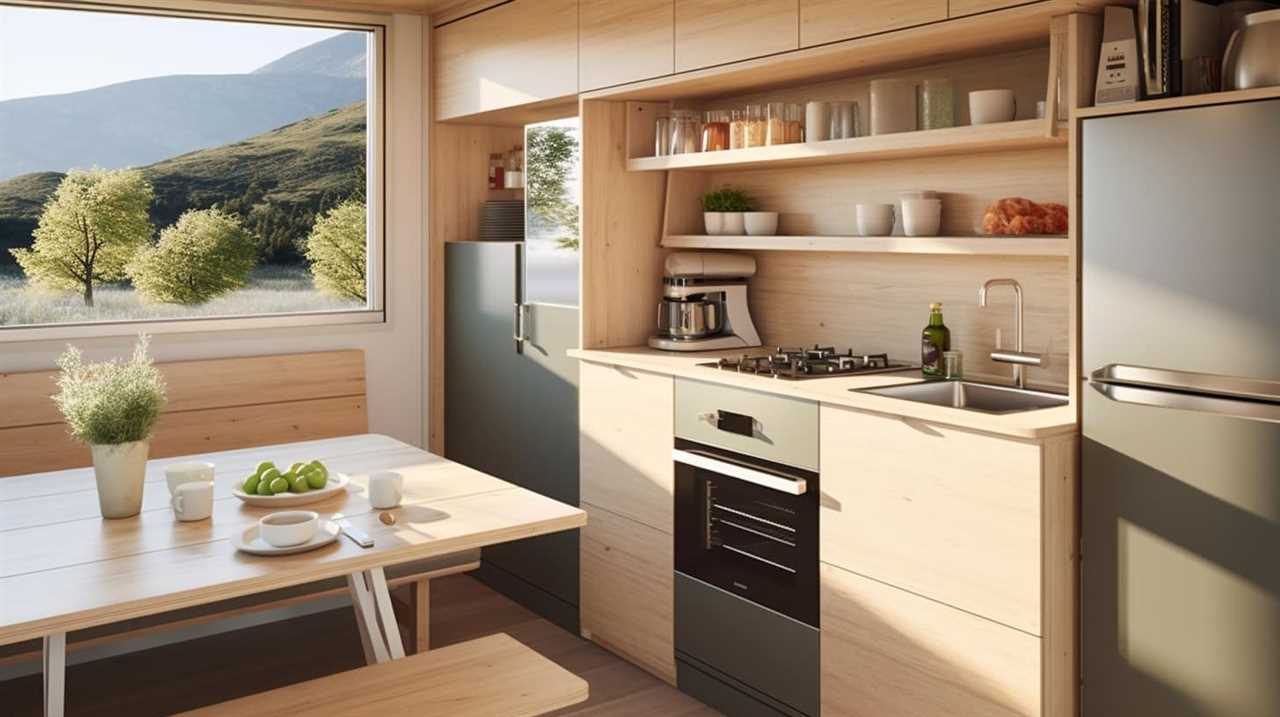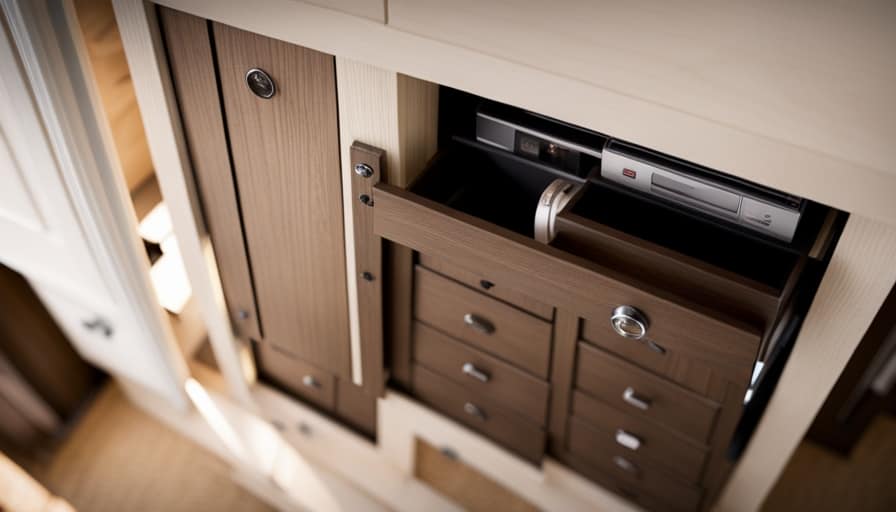Welcome to our guide on becoming an expert in miniature insulation! This article will provide you with the information and skills needed to properly insulate your small home.
Just like a well-tailored suit, proper insulation is essential for comfort and efficiency. We will explore various types of insulation, provide step-by-step instructions for measuring and fitting, and offer tips on sealing and finishing touches.
Get ready to transform your tiny abode into a cozy and energy-efficient haven. Let’s dive in!
Key Takeaways
- Choosing the right insulation material is essential for effective insulation in tiny houses.
- Proper measurement and planning are crucial for maximizing insulation performance and preventing energy loss.
- Sealing gaps and cracks, as well as using reflective barriers, contribute to energy efficiency.
- Insulation should be tightly fitted without gaps or spaces to avoid heat loss or air leakage.
Types of Insulation for Tiny Houses
When it comes to insulating our tiny houses, we’ve several options to choose from. Insulation installation plays a crucial role in maintaining a comfortable living environment while also ensuring energy efficiency.

One popular choice for tiny house insulation is fiberglass insulation. Made from fine glass fibers, it’s easy to install and provides excellent thermal performance.
Another option is spray foam insulation, which is applied as a liquid and expands to fill all gaps and crevices, creating an airtight seal. This type of insulation offers superior energy efficiency and soundproofing capabilities.
Additionally, rigid foam insulation boards can be used for external insulation, providing both thermal resistance and moisture resistance.
Regardless of the insulation type chosen, regular insulation maintenance is essential to ensure its effectiveness over time. This includes checking for any damage or gaps and addressing them promptly.

Measuring and Planning for Insulation
When it comes to measuring and planning for insulation in a tiny house, there are three key points to consider.
First, space and dimensions need to be carefully assessed to ensure that insulation can be properly installed without compromising living space.
Second, there are various material options available, such as fiberglass, spray foam, and rigid foam, each with their own advantages and disadvantages that should be taken into account.
Lastly, implementing energy efficiency techniques, such as sealing air leaks and using reflective barriers, can enhance the overall insulation performance of the tiny house.
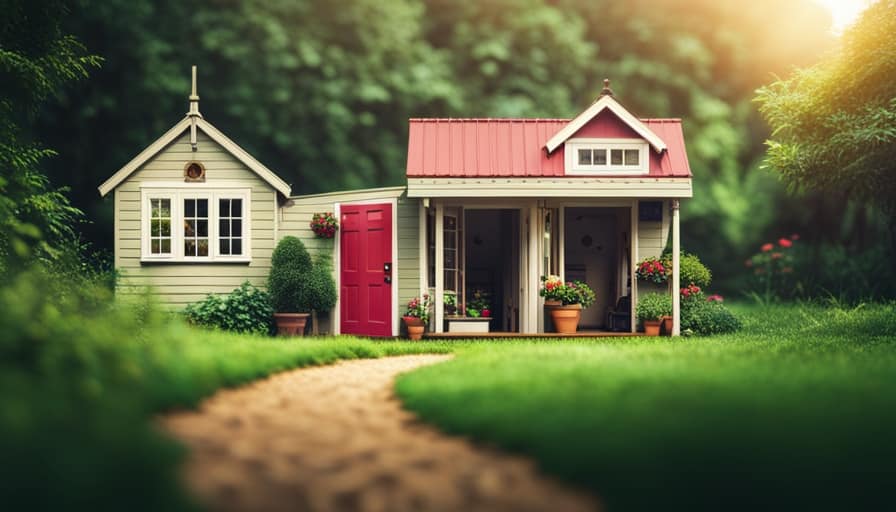
Space and Dimensions
For our tiny house insulation project, we need to carefully measure and plan the space and dimensions for the insulation installation. Measuring accuracy and space optimization are crucial in ensuring that we achieve maximum efficiency and effectiveness in our insulation efforts.
When measuring, it’s important to use precise tools and techniques to obtain accurate dimensions. This will help us determine the amount of insulation material needed and ensure a proper fit.
Additionally, space optimization is key in maximizing the insulation’s performance. By identifying and addressing any gaps, cracks, or areas prone to air leakage, we can prevent energy loss and maintain a comfortable indoor environment.
Planning the space and dimensions for insulation requires attention to detail and a thorough understanding of the tiny house’s layout to achieve optimal results.
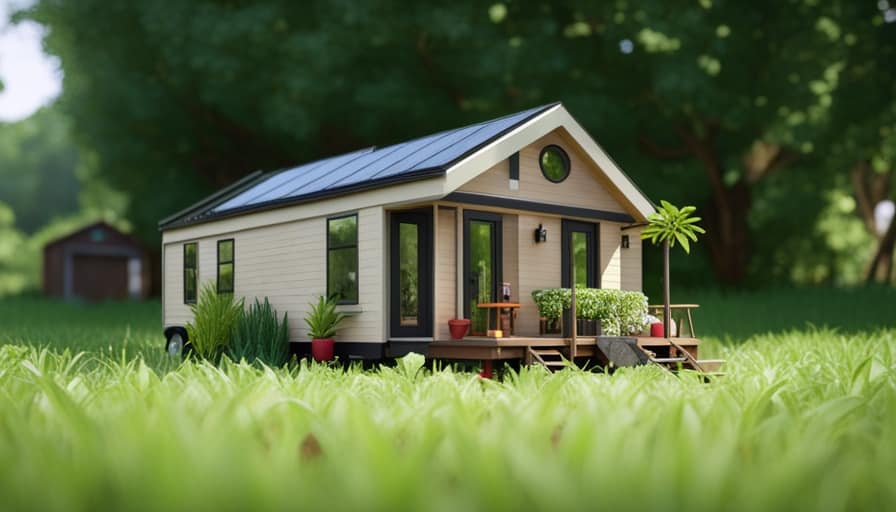
Material Options
We carefully consider various material options when measuring and planning for insulation in our tiny house project. Insulation installation is a crucial step in creating a comfortable and energy-efficient living space.
Here are four material options to consider, taking into account insulation cost:
-
Fiberglass: This widely-used option is affordable and easy to install. It provides good thermal performance and soundproofing.
-
Spray Foam: Although more expensive, spray foam insulation offers excellent insulation properties and acts as an air barrier, reducing energy loss.

-
Cellulose: Made from recycled materials, cellulose insulation is environmentally friendly and provides good thermal performance. It can be blown into wall cavities and attics.
-
Mineral Wool: This fire-resistant option is durable and offers excellent thermal and sound insulation. It’s suitable for both interior and exterior walls.
Energy Efficiency Techniques
To ensure optimal energy efficiency, our team carefully measures and plans for insulation in our tiny house project. By implementing effective insulation installation techniques and conducting an insulation cost comparison, we can determine the most suitable materials for our tiny house.
To begin, we measure the areas that require insulation, such as walls, floors, and ceilings. This allows us to accurately calculate the amount of insulation material needed. Additionally, we assess the R-value, which measures the insulation’s resistance to heat flow. A higher R-value signifies better insulation performance.

Next, we conduct an insulation cost comparison to find the most cost-effective option without compromising on quality. This involves researching different insulation materials and their prices, considering factors such as durability and energy efficiency.
Cutting and Fitting Insulation in Walls
When cutting and fitting insulation in walls, our main concern is achieving maximum efficiency without compromising the structural integrity of the tiny house. To ensure a successful insulation installation, we employ the following cutting techniques:
-
Measure twice, cut once: Accurate measurements are crucial to minimize waste and achieve a snug fit.
-
Utilize a sharp utility knife: A sharp blade ensures clean and precise cuts, allowing for seamless insulation installation.
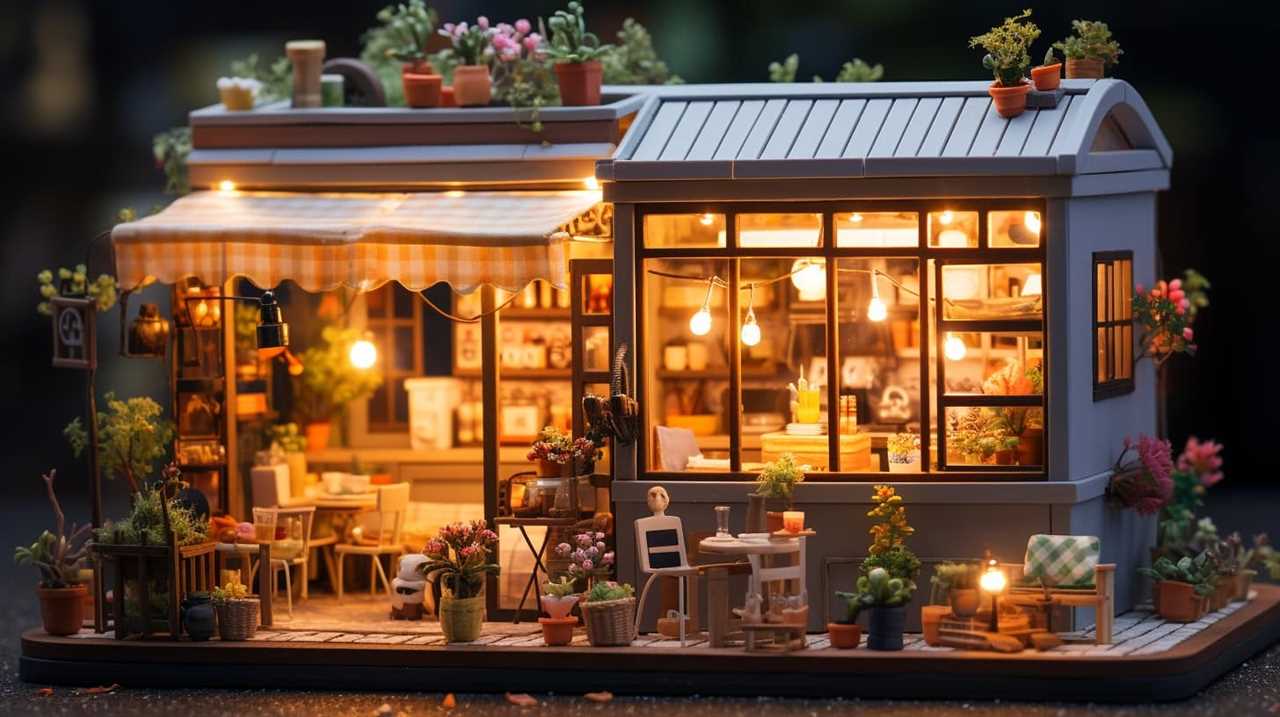
-
Consider the R-value: Different insulation materials have varying R-values, which determine their thermal resistance. Select the appropriate insulation with the desired R-value for optimal efficiency.
-
Mind the gaps: Insulation should be tightly fitted without any gaps or spaces to avoid heat loss or air leakage.
By following these cutting techniques, we can effectively fit insulation in walls, creating an energy-efficient and comfortable living space.
Now, let’s move on to the next section where we’ll discuss insulating ceilings for maximum efficiency.
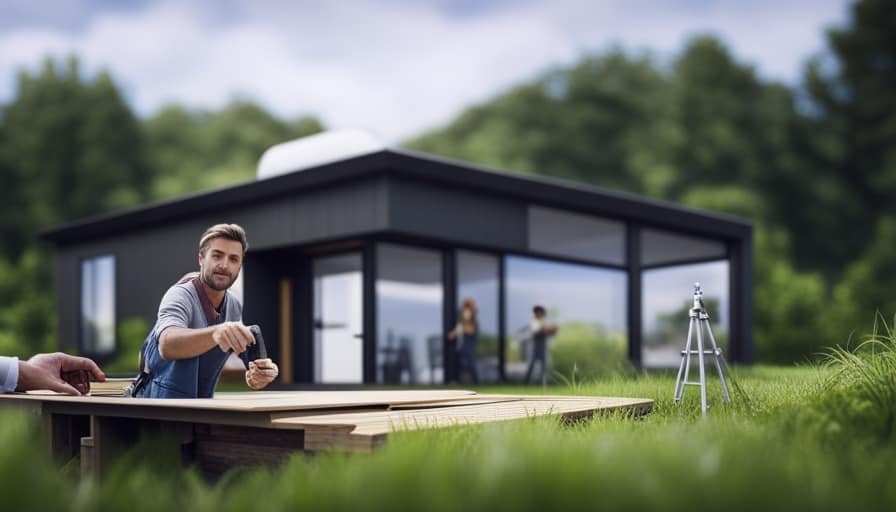
Insulating Ceilings for Maximum Efficiency
For the most efficient insulation of our tiny house, we’ll utilize the appropriate materials and techniques to insulate the ceilings.
Insulating roofs is crucial to maintaining a comfortable and energy-efficient living space. To achieve this, we recommend using insulation materials with a high R-value, such as fiberglass or spray foam, which effectively trap air and prevent heat transfer.
It’s important to consider ventilation when insulating the ceilings to prevent moisture buildup and ensure proper air circulation. Installing vents or fans can help regulate humidity levels and prevent condensation.
Additionally, sealing any gaps or cracks in the ceiling will further enhance insulation and minimize air leakage.
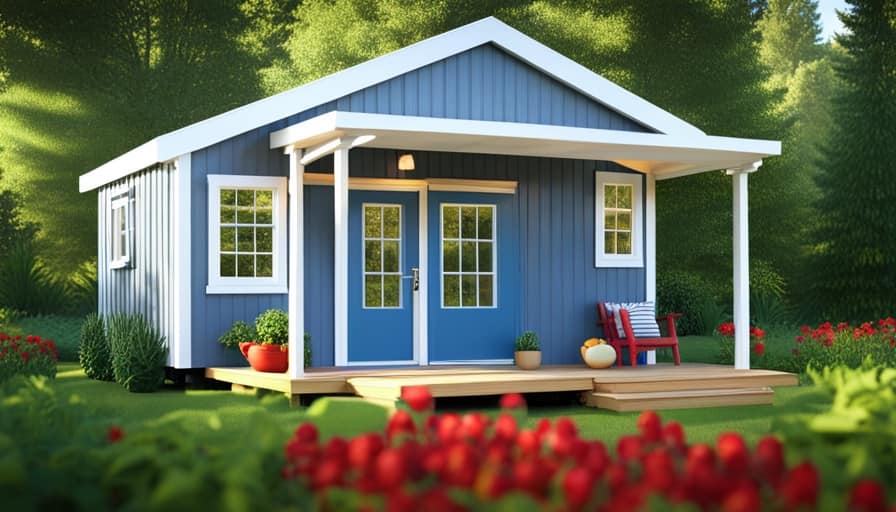
Ensuring Proper Insulation in Tiny House Floors
We will use appropriate materials and techniques, such as foam board insulation and sealing any gaps or cracks, to ensure proper insulation in our tiny house floors. Proper insulation not only helps to maintain a comfortable indoor temperature but also prevents moisture from seeping into the floor.
Here are four key steps to ensure effective insulation in our tiny house floors:
-
Choose the right insulation material: Foam board insulation is a great choice for tiny house floors as it provides excellent thermal resistance and moisture prevention.
-
Install insulation properly: Ensure that the insulation is cut and fitted tightly to cover the entire floor area. This will prevent any gaps that could compromise its effectiveness.

-
Seal gaps and cracks: Use caulk or expanding foam to seal any gaps or cracks in the floor. This will further enhance the insulation and prevent heat loss.
-
Consider underfloor heating: If you live in a colder climate, underfloor heating can be installed along with the insulation to provide additional warmth and comfort.
Sealing and Finishing Touches: Windows, Doors, and Drafts
To ensure maximum energy efficiency, we recommend caulking and weatherstripping windows and doors, and addressing any drafts that may compromise the insulation of our tiny house. Proper windows installation and weatherstripping techniques are essential to create a tight seal and prevent air leakage. When installing windows, it is important to choose energy-efficient options that have low U-values and high insulation ratings. Additionally, applying weatherstripping materials around the window frames and door jambs can help prevent drafts and improve insulation. Here is a table that summarizes different weatherstripping techniques for windows and doors:
| Weatherstripping Technique | Description |
|---|---|
| Adhesive-backed foam tape | Easy to install, provides good insulation, suitable for small gaps |
| V-strip | Versatile, can be used for windows and doors, blocks drafts effectively |
| Door sweeps | Seals gaps at the bottom of doors, prevents air leakage |
| Silicone caulk | Ideal for sealing gaps around windows and doors, durable and weather-resistant |
Frequently Asked Questions
How Much Does Insulation for a Tiny House Typically Cost?
Insulation costs for a tiny house vary depending on factors such as size, materials used, and installation method. A cost comparison of different insulation materials can help determine the most economical option for your project.
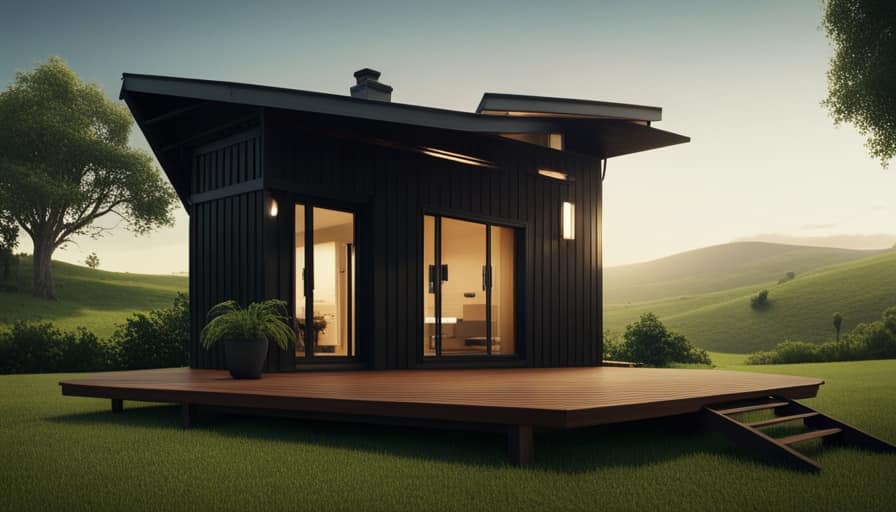
Is It Necessary to Insulate the Floor of a Tiny House if It Will Be Placed on a Trailer?
Yes, it is necessary to insulate the floor of a tiny house if it will be placed on a trailer. Insulating the floor helps regulate temperature, prevents heat loss, and improves energy efficiency. Various insulation methods can be used to achieve these benefits.
Can I Use the Same Insulation Material for Both the Walls and the Ceiling of My Tiny House?
Using the same insulation material for both the walls and the ceiling of a tiny house has pros and cons. It saves time and cost, but may not provide optimal insulation efficiency due to different heat transfer properties.
What Is the Best Way to Insulate a Tiny House to Protect It From Extreme Temperatures?
When it comes to insulating a tiny house to protect it from extreme temperatures, we must consider various techniques and insulation materials. Each option has its pros and cons, which we will explore in detail.
Are There Any Specific Building Codes or Regulations That I Need to Follow When Insulating a Tiny House?
When insulating a tiny house, it is important to consider building code requirements and regulations. These guidelines ensure the safety and efficiency of the insulation. Compliance with these standards is crucial for a well-insulated and legally compliant tiny house.

Conclusion
In conclusion, proper insulation is crucial for maintaining a comfortable and energy-efficient tiny house. By using the right types of insulation and carefully measuring and planning, you can create a well-insulated space.
For example, John, a tiny house owner, installed spray foam insulation in his walls and noticed a significant reduction in heating and cooling costs.
With attention to detail and the right techniques, you can master the art of miniature insulation and enjoy a cozy and sustainable living space.
I’m Theodore, and I love tiny houses. In fact, I’m the author of Tiny House 43, a book about tiny houses that are also tree houses. I think they’re magical places where imaginations can run wild and adventures are just waiting to happen.
While tree houses are often associated with childhood, they can be the perfect adult retreat. They offer a cozy space to relax and unwind, surrounded by nature. And since they’re typically built on stilts or raised platforms, they offer stunning views that traditional homes simply can’t match.
If you’re looking for a unique and romantic getaway, a tree house tiny house might just be the perfect option.

